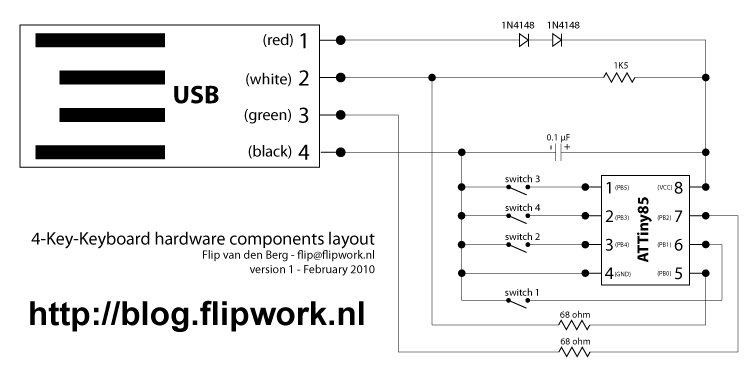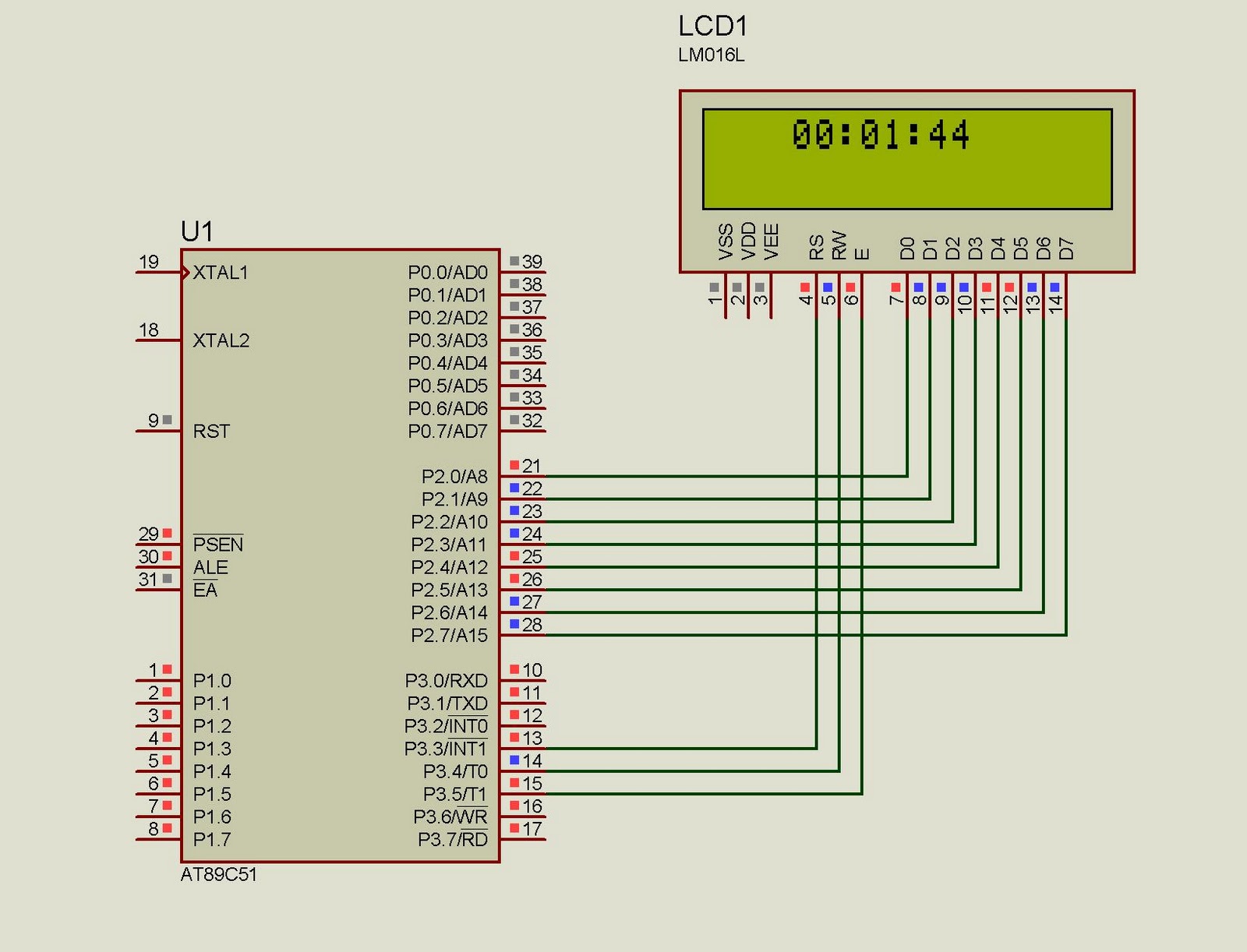
4-key keyboard using ATtiny85

Some time ago, a 1-key keyboard project was developed. The ATTiny microcontroller has been a recurring consideration since then.
The 1-key keyboard project utilizes the ATTiny microcontroller, a compact and efficient device suitable for a variety of embedded systems applications. The primary function of this project is to create a simple input mechanism using a single key, which can be employed in various scenarios such as triggering events, sending signals, or controlling devices.
The circuit design typically involves connecting a push-button switch to one of the digital input pins of the ATTiny microcontroller. When the button is pressed, it sends a signal to the microcontroller, which can then be programmed to execute a specific function, such as lighting an LED, sending a signal to another device via a communication protocol, or activating a relay.
To ensure reliable operation, a pull-up resistor is often included in the circuit. This resistor connects the input pin to the positive supply voltage, keeping the pin in a high state when the button is not pressed. When the button is pressed, the input pin is connected to ground, resulting in a low state. Debouncing techniques may also be implemented in the software to prevent false triggering due to mechanical bouncing of the switch contacts.
Power supply considerations are crucial for the ATTiny microcontroller, which typically operates within a voltage range of 1.8V to 5.5V. A simple battery or a regulated power supply can be used to provide the required voltage. The microcontroller can be programmed using a suitable development environment, with code that defines the behavior of the system based on the button press.
In summary, the 1-key keyboard project serves as a practical application of the ATTiny microcontroller, demonstrating its versatility and effectiveness in creating simple yet functional electronic devices.A good while back, I made the 1-key-keyboard project. Ever since it has always been in the back of my mind that the ATTiny microcontroller. 🔗 External reference
The 1-key keyboard project utilizes the ATTiny microcontroller, a compact and efficient device suitable for a variety of embedded systems applications. The primary function of this project is to create a simple input mechanism using a single key, which can be employed in various scenarios such as triggering events, sending signals, or controlling devices.
The circuit design typically involves connecting a push-button switch to one of the digital input pins of the ATTiny microcontroller. When the button is pressed, it sends a signal to the microcontroller, which can then be programmed to execute a specific function, such as lighting an LED, sending a signal to another device via a communication protocol, or activating a relay.
To ensure reliable operation, a pull-up resistor is often included in the circuit. This resistor connects the input pin to the positive supply voltage, keeping the pin in a high state when the button is not pressed. When the button is pressed, the input pin is connected to ground, resulting in a low state. Debouncing techniques may also be implemented in the software to prevent false triggering due to mechanical bouncing of the switch contacts.
Power supply considerations are crucial for the ATTiny microcontroller, which typically operates within a voltage range of 1.8V to 5.5V. A simple battery or a regulated power supply can be used to provide the required voltage. The microcontroller can be programmed using a suitable development environment, with code that defines the behavior of the system based on the button press.
In summary, the 1-key keyboard project serves as a practical application of the ATTiny microcontroller, demonstrating its versatility and effectiveness in creating simple yet functional electronic devices.A good while back, I made the 1-key-keyboard project. Ever since it has always been in the back of my mind that the ATTiny microcontroller. 🔗 External reference





%2BCircuit%2Bdiagram%2Busing%2BCD4047%2Band%2BIRFZ44%2Bpower%2BMOSFET.png)